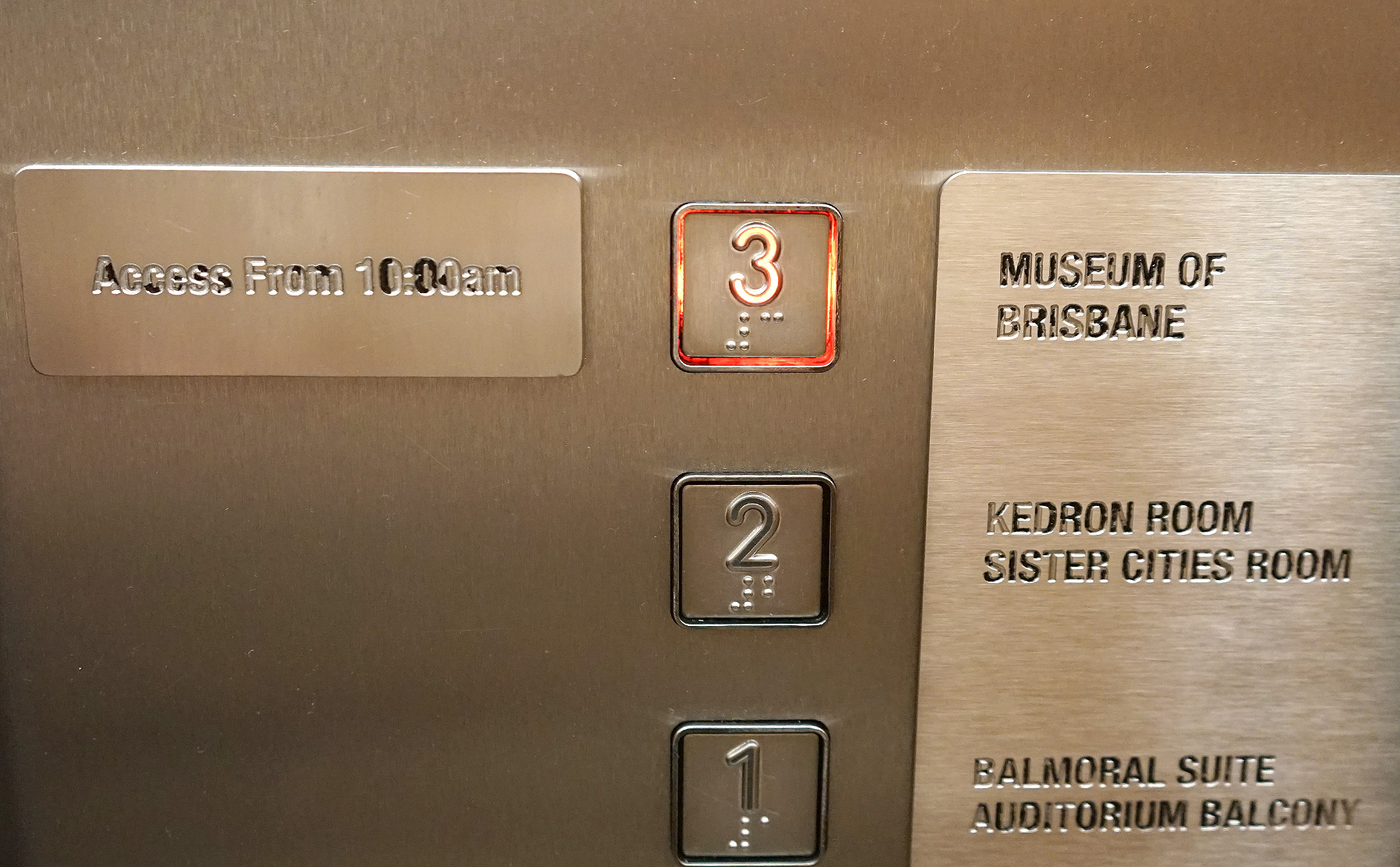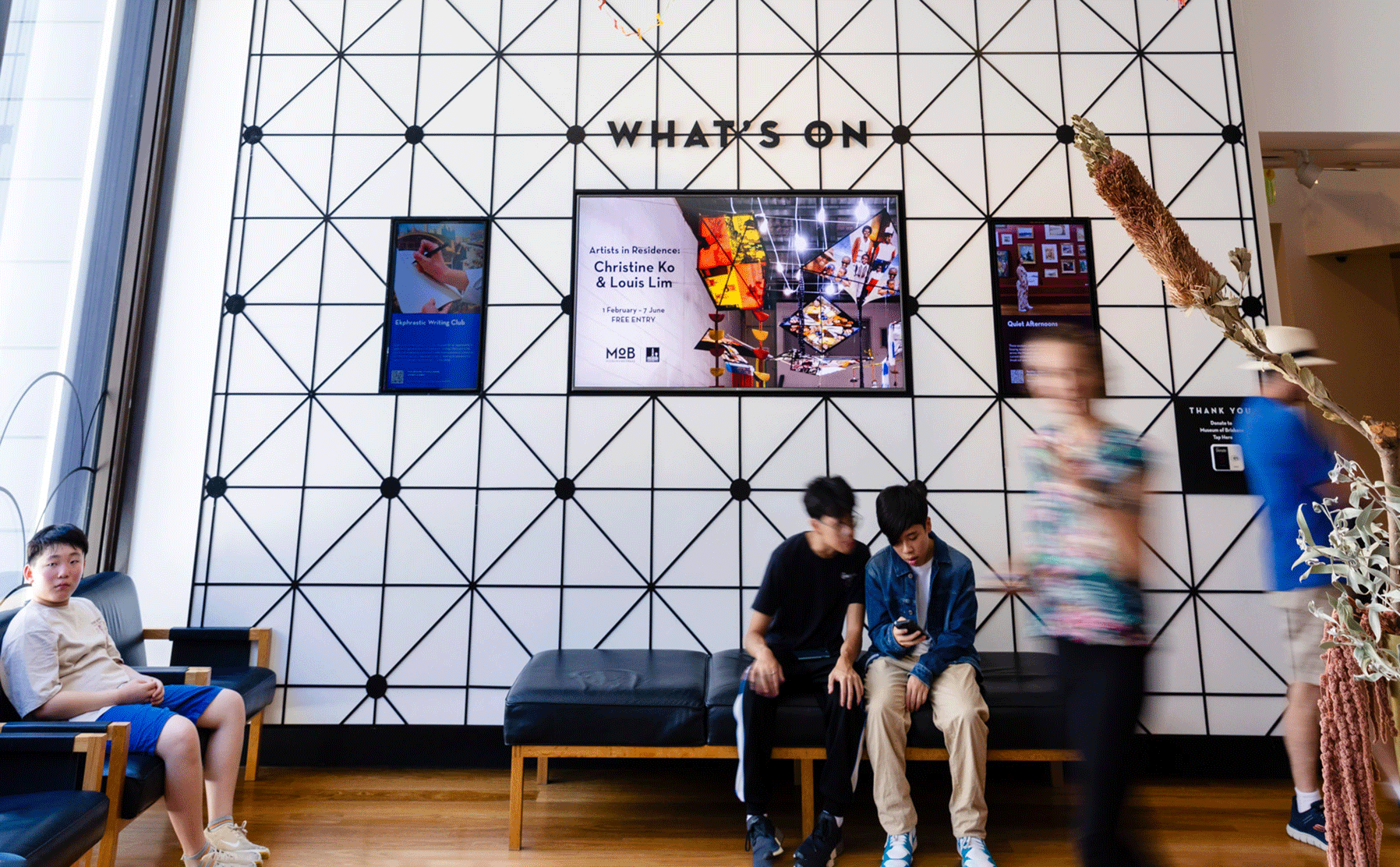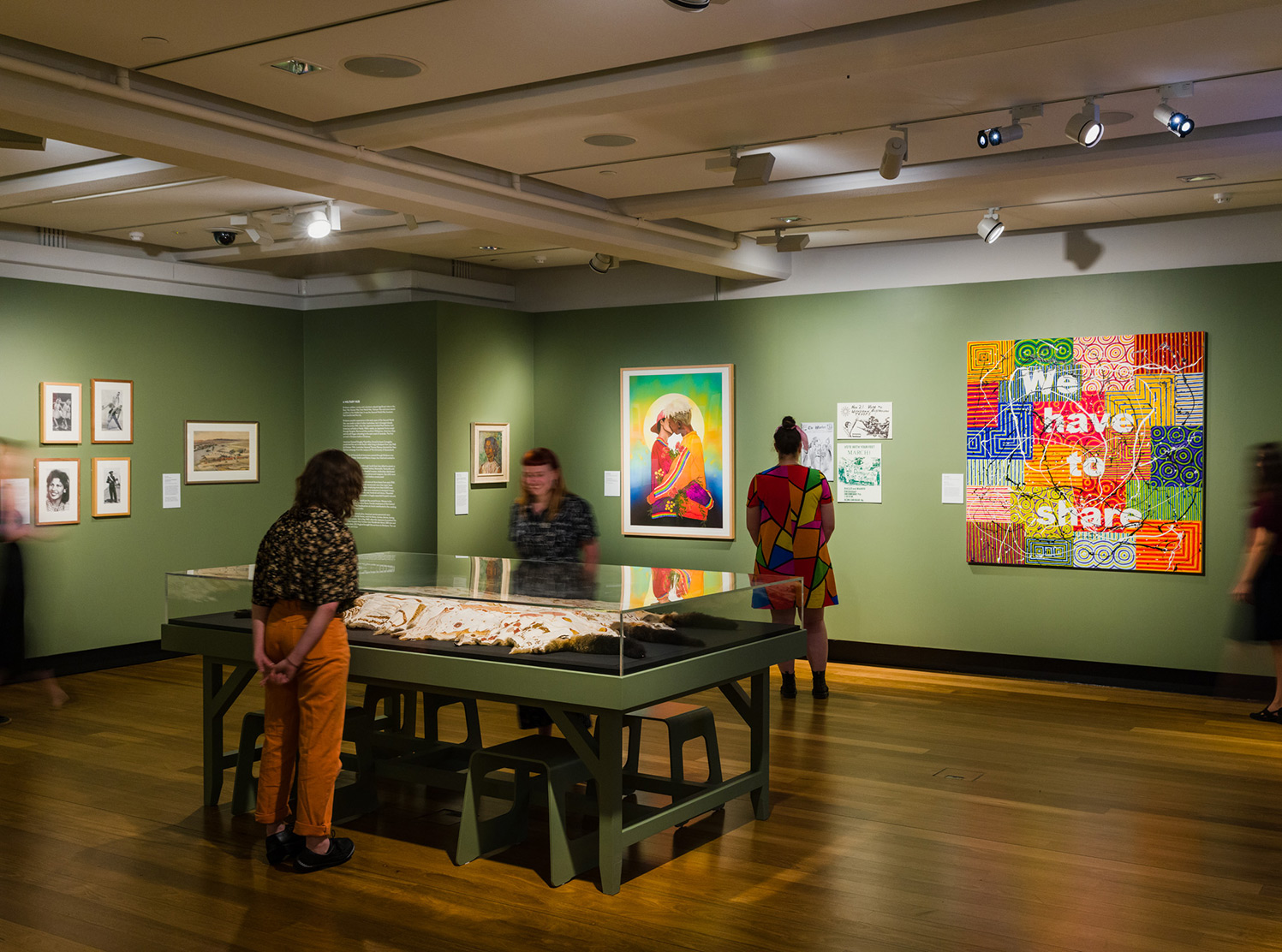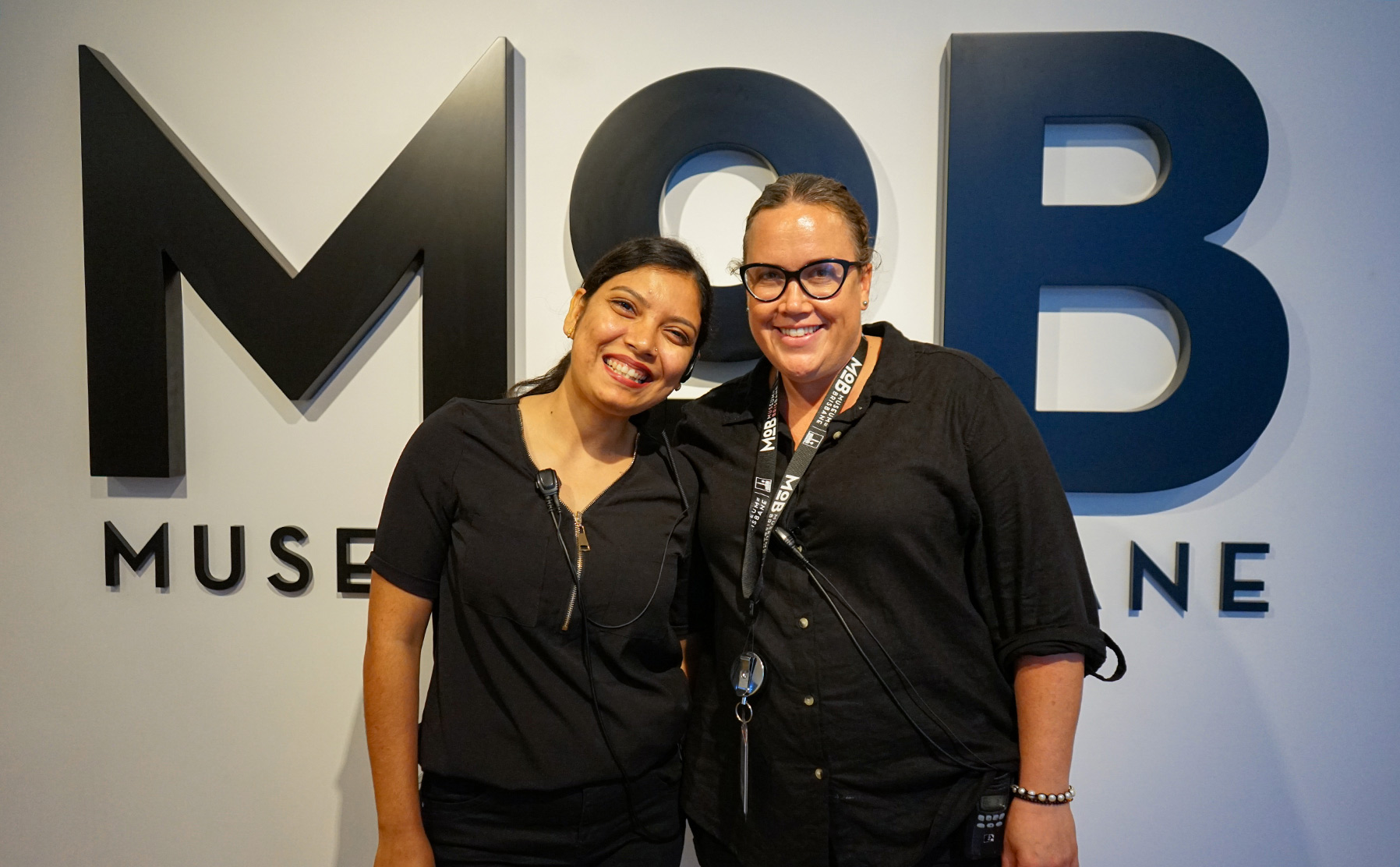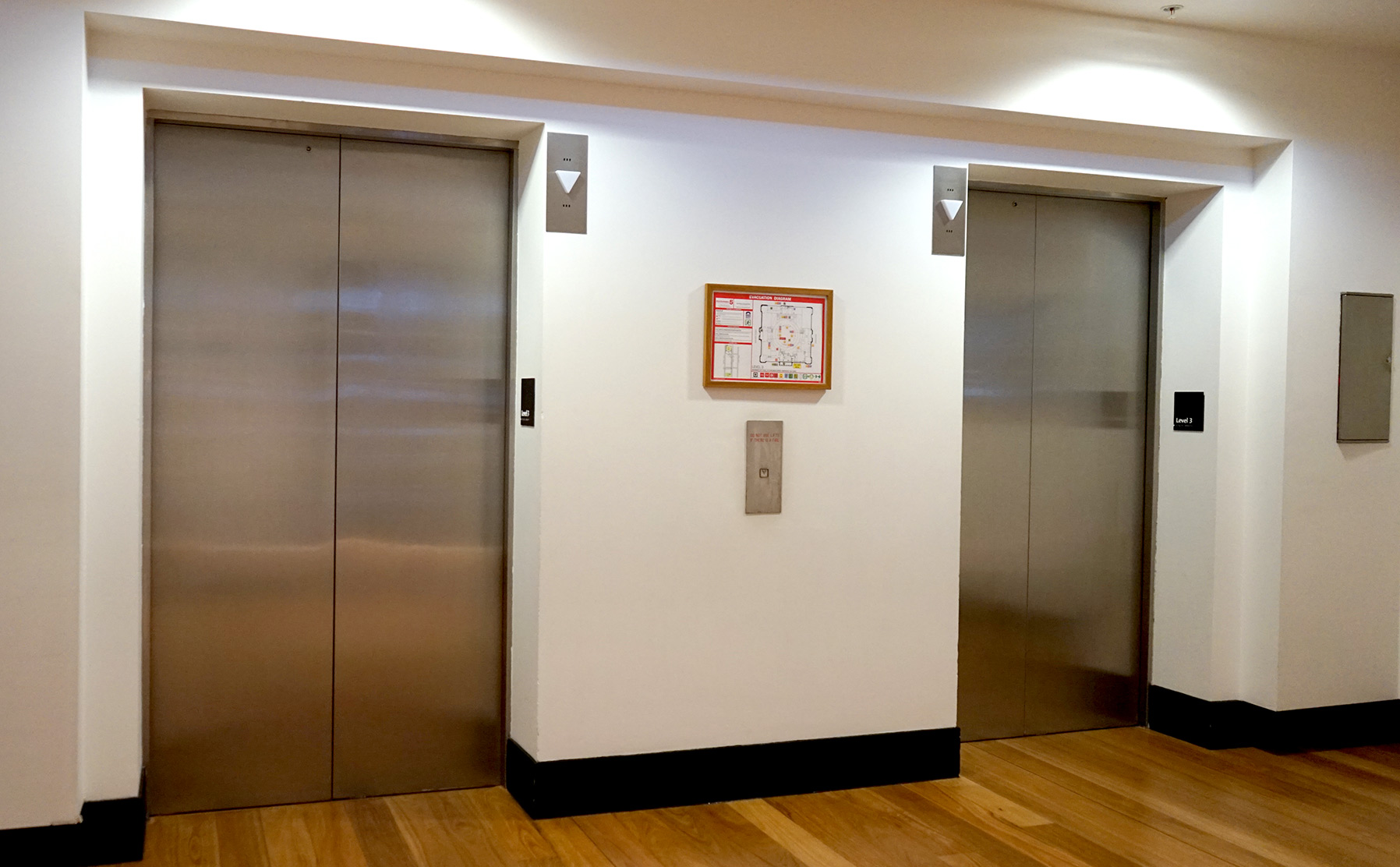Welcome to Museum of Brisbane. We are located on Level 3, City Hall in Brisbane City.
We invite you to use this Social Story to help familiarise yourself with the Museum.
We have a number of exhibitions on display which you can explore using the buttons below or by scrolling the page.
Have a question about access? Email info@museumofbrisbane.com.au.
I will enter Museum of Brisbane via the King George Square entrance.
To get to the Museum, I will use the lift located to my right through a set of doors. If I am unsure, I can follow the pink signs that say “Museum of Brisbane” or ask City Hall staff at the concierge desk on the ground floor for directions.
Once I enter the lift, I will select Level 3. I will see a label beside the button that says “Museum of Brisbane”.
When I arrive on Level 3, I see there are lockers in front of me where I can safely leave my backpack or bags if I would like to.
I can take some of my belongings with me into the Museum, like my phone or wallet. I cannot take any bags, food or drink.
The next room has a desk with friendly staff who can help me book a tour.
I will come back here if I decide to join a Clock Tower Tour.
If I would like to take a rest, I can sit on one of the chairs provided and look through the big windows.
I will enter the Museum by walking down the hallway.
When I continue down the hallway, I notice a shop in front of me and to my left.
This shop stocks lots of different wares from more than 200 local makers.
I can look in the shop now or I can look in the shop on my way back.
After I walk past the shop, I will walk down a purple hallway to enter the Museum.
I notice the toilet to my right.
There are glass doors that open on their own. I walk through them to see more exhibitions.
After I walk through the glass doors, I can choose to explore a series of exhibitions.
In the Museum, I can look closely at the art and objects but I won’t touch them as they are very fragile.
There are currently some construction noises in the Museum. I may like to wear noise cancelling headphones, and that’s ok.
This exhibition space has low lighting and an audio soundtrack of a person speaking. I may need to put on my noise cancelling headphones, and that’s ok.
In the exhibition space, there is white text printed on the walls. I can read these to find out what the exhibition is about.
I notice there are small white cards with black text beside each artwork too. I can read these to find out more about each individual artwork.
In the centre of the room, I notice a large table with stools stored below it. If I would like to, I can pull out a stool and sit on it while I look closely at the artwork.
Once I have finished looking at Perspectives of Brisbane, I can walk down the dark hallway to view 花弁 Hanabira (Gentle Petal).
This exhibition has bright walls, some reflective surfaces, a video and soundtrack. I may need to wear tinted glasses or noise cancelling headphones, and that’s ok.
As I enter, I notice stools, beanbags and a mat on the floor with cushions. I am welcome to sit on any of these and gently craft a flower.
Once I have finished crafting a flower, I can hang my creation on the wall.
I enter the space by passing three large fabric drops that depict photographs of a place called the Enoggera Resevoir.The exhibition is quite low lit so may feel quite dark at first. If the space feels overwhelming I can exit through a side hallway on the left, go back the way I entered or exit into the Dome Gallery which has more bright lighting.
There are a lot of things I can look at in this exhibition including photographs, old cigar boxes and 3-D images called Stereographs. There are some things in the exhibition I can touch – like the stereographs and the draws that say “open me”.
If I want to interact with other objects in the exhibition but aren’t sure if it’s ok I can ask a staff member to bring out a touch trolley which will have objects I can handle safely.
There are two videos playing in the exhibition. One with sound and one without.
Once I am finished viewing 花弁 Hanabira (Gentle Petal), I can exit through the peach-coloured doorway to enter the Dome Gallery.
When I enter the Dome Gallery, I notice ten-panel drawings spread over two walls, next to the panels, there are ceiling high windows covered in colourful vinyls. This is an Artist in Residence project titled “Leaf SZN” by Dylan Bolger.
Some of the window vinyls have bright colours. I may need to wear tinted glasses, and that’s ok. I notice there are large white cards with black text beside the drawings. I can read these to find out more about the artwork. I can stand in front of the drawings and the window vinyls to observe the colours and details of the artworks.
Once I am finished viewing the artwork, I can walk back in the direction I came.
When I leave the Museum, I will collect my things if I used a locker and exit down the lifts.
I will press the down-pointing arrow button located beside the lift and wait for the doors to open.
When I enter the lift, I will go to the panel of buttons on the left and press “G” for ground floor. This will take me down to the main foyer of City Hall, where I can exit the building the same way I came in.

